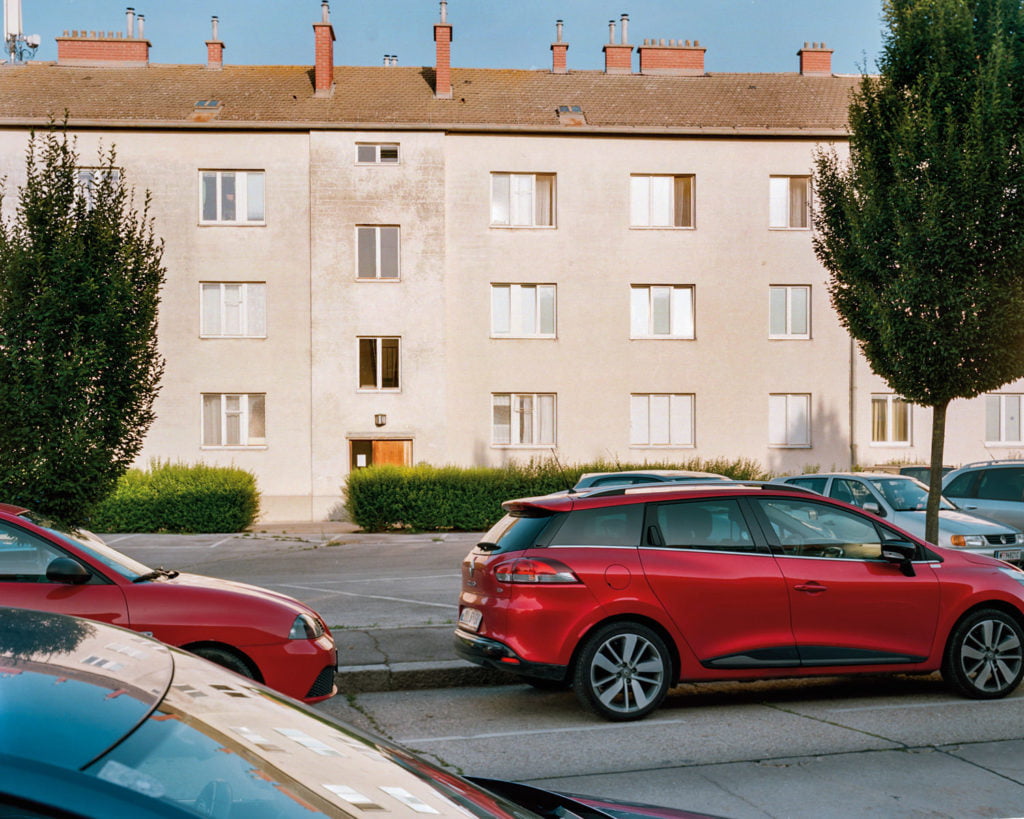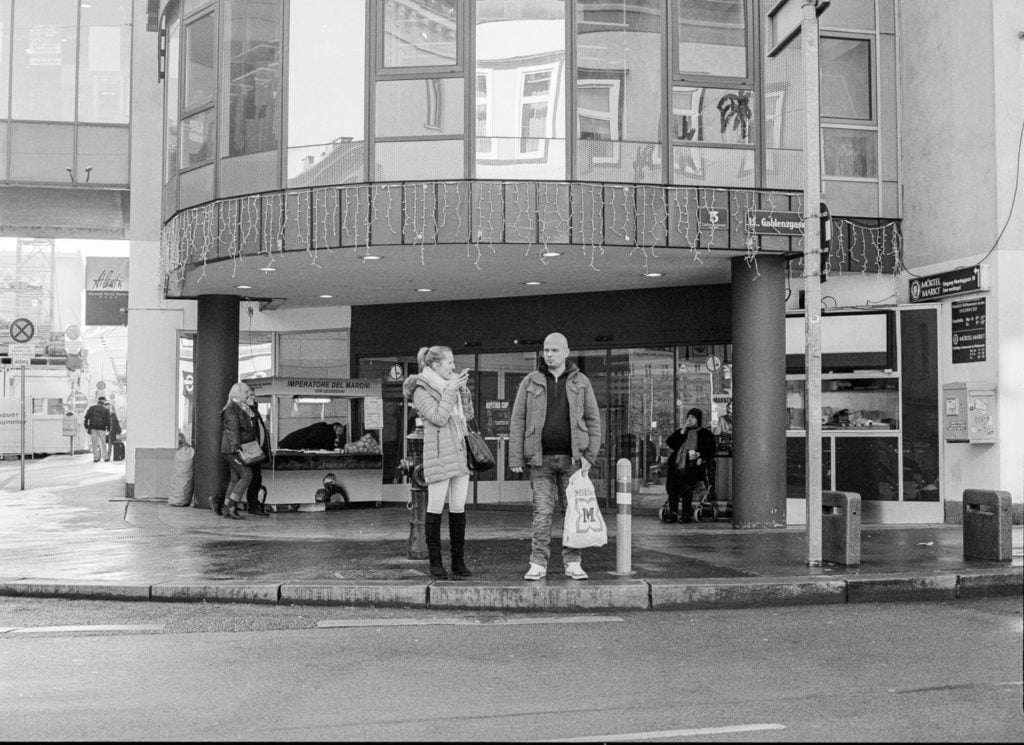Leo Kandl
Vienna / Street Photography
What I photographed:
These are photographs of squares and streets in Vienna that highlight the changes, the social contact surfaces, and the fractures: On Franz-Jonas-Platz and along Brünner Strasse in Vienna’s 21st District, along Simmeringer Hauptstrasse in the 11th District, along the Gürtel beltway in the 15th and 17th Districts, and others.
For the most part I used a 4×5” camera. The other photographs were taken with a 6×7” and 6×4.5” camera.
Leo Kandl
Leo Kandl, born 1944; University of Applied Arts Vienna. Lives and works in Vienna. www.leokandl.net
In his photographic work since the 1970s Leo Kandl has been creating city views beyond the clichés of tourism and tourist attractions. He is interested in the scenes of everyday life and the settings of the banal. In his pictorial narratives the crossroads and squares in front of supermarkets, the multi-storey car parks and underground railway stations provide the stage and the backdrop for the protagonists. They are anonymous passers-by, people passing through or lingering in public spaces; they create ephemeral constellations of the coincidental, choreographies of the accidental, a silent ballet performed among the sparse sets of a sociological field of experimentation.
For Kandl, it’s the outskirts of Vienna, the capital city on the Danube, that are interesting and vibrant, but also revealing of today’s urban living environments and the problems they pose. And unlike the aesthetic constructs of pedestrianised promenades and the prestigious stately architecture of the city centre, the arterial roads with their strung-out parades of shops, 1970s advertising, cafés, and betting shops tell the story of what has been and gone. The rude charm of these ensembles and the patterns of movement of their protagonists provide the narrative for this pictorial quest. The urban space is a social contact surface, a gathering place for all sorts of ethnicities and social strata; it is synonymous with mobility and migration: the city as such revealed as a divided space, as a story of different lives, heterogeneous genealogies, and divergent futures.
Floridsdorf, for example: In his photographs Kandl reflects his familiar surroundings, his neighbourhoods, the journeys he makes every day. Two characteristics define the small towns and villages that were grouped together in 1905 and incorporated to form an administrative district: their location on the outskirts of the city, their orientation out of the urban fabric and into the flat landscape that stretches as far as the lands of Bohemia, and the small squares at the heart of these erstwhile villages. And the photographer’s gaze moves along them, and among them: horizontally, in parallel with the long drawn-out social housing projects of the 1930s and 1960s, but also pausing, circling centripetally around an underground railway station, the waiting zone at the terminus, the traffic island in front of the shopping mall.
Kandl’s street portraits are not meant as an indictment of politics and its forgetfulness, as a demonstration of the failure of urban planning on a human scale; rather, his vedute are pictures of today’s urban living environments. The photographs of Brünner Strasse are like calm camera tracking shots along a suburban zone slumped in a midday snooze where the heartbeat of the big city slowly ebbs away. Kandl depicts a clandestine urban model unable to choose between aligning itself along those main thoroughfares and clinging on to the urban or opting in favour of a more pondered market place/village affair.
The main square was named after Franz Jonas, who was born in Floridsdorf in 1899 and went on to become Federal President. Here, in front of the entrance to the regional trains and the S-Bahn and U-Bahn suburban and underground trains, an expanse of concrete was created in the 1960s, with shops, stalls and cafés surrounded by streets, parking spaces, tram lines and pavements, an area hustling and bustling with pedestrians and onlookers, passers-by hurrying through or lingering, street vendors, and commuters. Kandl documents all these comings and goings. His photographs are about the structures left behind by these constant patterns of movement; they are about the spaces and the interspaces these protagonists constantly reformulate and define against the backdrop of the square.
Margit Zuckriegl was born in 1955 in Salzburg and studied art history, archeology and philosophy in Salzburg and Rome. She graduated from the University of Salzburg in 1983. She lives in Salzburg.




















